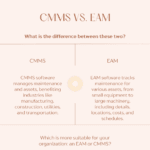
Artificial Intelligence (AI) and Voice Over Internet Protocol are two of the fastest-developing technological advancements. These technologies have changed business operations and communication as we know it.
Integrating the power of AI and the advantages of VoIP is a match made in heaven. Incorporating these two technologies can be a potential game changer in the modern market structure and business operation.
So, let’s see how will AI shape the future of VoIP and what changes can we anticipate with the current technology, adaptation, and development.
Definition of VoIP
Voice Over Internet Protocol (VoIP) is a phone system that allows users to perform voice communication (make and receive calls) over the Internet.
With VoIP, the users can make and receive calls with a device that supports internet connectivity and a good internet connection. It reduced the need for physical infrastructure, telephone lines, and hardware.
VoIP is regarded as the future of communication as it helps in cost saving, scalability, flexibility, mobility, security, and many similar benefits.
👉You may also be interested in Considering Switching to VoIP. Here’s What You Need to Know!
Brief Overview of AI
Artificial intelligence commonly known as AI has become a common term with the current technological advancement.
AI can be defined as the process of copying human intelligence and human capacities robots, to devices, and machines, with the help of computer systems.
Artificial intelligence involves creating computer programs or systems that replicate humans to perform tasks that generally require a human touch. Using AI involves implementing various factors like natural language processing (NLP), learning from past transactions or experiences, recognizing patterns, making decisions (or aiding in decision-making), and solving problems.
The Role of AI in VoIP Evolution
Various businesses and industries have already started the integration of AI in some popular VoIP and yes, it has revolutionized the communication system. So, let’s learn more about the roles of AI in VoIP evolution.
A. Understanding AI’s Capabilities
AI has a wide range of capabilities that can help the successful implementation of Virtual phone numbers. Firstly, there are many capabilities like Natural Language Processing (NLP) that can help in understanding human languages and performing human-like interactions.
Likewise, AI can perform emotion analysis to some extent which can determine and predict emotion based on the tone and words of the speaker or caller. Finally, there are other advanced features like speech recognition that can help in personalized communication.
B. AI-driven Improvements in VoIP
Similarly, AI can be integrated with VoIP for a number of call-related improvements. For instance, artificial intelligence has the capability to perform noise reduction which can detect and remove background noises in the background, and bandwidth optimization which can reduce the size of digital packets during data transmission.
Furthermore, it can perform predictive analysis based on past transactions to improve the customer service and efficiency of each call.
C. Integration of AI with VoIP Systems
Based on the capabilities and improvements of AI in VoIP, we can integrate these two technologies for implementing AI-powered virtual assistants which reduce the need for human interaction for day-to-day tasks or repetitive tasks.
It can offer customized and personalized communication and services by analyzing the caller’s ID and data. Finally, it can also operate data analytics for future reference to make informed decisions.
AI-Powered VoIP Applications

There are many AI-powered VoIP applications that have enhanced communication operation and functionality. Here are some of the most common ones.
A. Virtual Assistants and Chatbots
The first AI-powered VoIP applications that are being used commonly in businesses are virtual assistants and chatbots. Businesses can use these AI-powered tools to interact with users, clients, and others. It includes handling their problems, questions, and inquiries for more accurate and efficient results.
The AI-powered virtual assistants and chatbots can be used to complete repetitive tasks, recurring and monotonous tasks like answering frequently asked questions.
B. Predictive Analytics
Next on the list, we have predictive analytics. Machine learning (ML) is an essential factor of Artificial Intelligence. ML deals with collecting, analyzing, and using past data and information to determine patterns, make decisions, and solve problems. Moreover, it also deals with making predictions based on past data.
So, AI can use past data like calls and transactions to perform predictive analysis on call volume and quality of the service.
C. Speech Analytics
Lastly, we have AI-powered speech analytics. This feature deals with understanding, and interpreting the human language before exporting the data in the form of text.
Currently, speech analytics can perform sentiment analysis to analyze the emotions and intentions of the callers. Lastly, it can do quality assurance by evaluating the call and giving the necessary feedback.
Lastly, it can perform compliance management and legal monitoring by warning conversations that might be sensitive.
Future Trends and Possibilities
The integration of AI and VoIP has offered a number of benefits and functions that might have been impossible some years ago. Although this combination has shown us the wonder of technology, we can anticipate more future trends and possibilities. Here are some of them.
A. Evolution of AI in VoIP
The AI in VoIP is still developing. So, in the near future, we might see the implementation of some advanced features like improvised natural language processing, multi-language support, and even things like contextual understanding which are not possible in today’s time. This can enhance customer interactions.
B. Emerging Technologies and Their Impact
With the exponential development of network data, the need for cyber security, and seamless computing, we can expect technologies like Edge computing which significantly reduces latency issues in data processing, Blockchain technology which adds additional layers to data security, and 5G connectivity which enhances the time for data processing and transfer.
C. Ethical and Privacy Considerations
Data privacy and ethics have become sensitive topics in today’s world where data is everything. As a result, businesses have been focusing more on data protection, transparency, and accountability than ever before. Here the AI and VoIP integration might initiate the following things to address the issue of ethical and privacy considerations.
Challenges and Limitations

Integrating AI with VoIP is a complex process and there might be many technical challenges, and problems while implementing human-ai collaboration. Here are the most common challenges and limitations of combining these two technologies.
A. Technical Challenges in AI Integration
First and foremost, it is very challenging to implement AI and VoIP as it requires expertise, infrastructure, resources, and training. Even with all these factors, there is no guarantee that these technologies will be implemented seamlessly.
Furthermore, AI and machine learning require a huge amount of qualitative data to learn from past transactions, predict the future, operate, and help in decision-making and problem-solving.
Finally, ensuring a real-time analysis of data and information can be complex and require complex algorithms, bandwidth, and processing systems which can be hard to get by.
B. Human-AI Collaboration and Trust
There can be many issues while collaborating humans with AI, especially customers. First, there can be resistance to change as callers might not feel comfortable interacting with an AI rather than a human.
Second, there can be issues while transitioning calls from AI to human operators, this can be common in conditions where a person has to take over a call due to the inability of AI to handle the problem.
Finally, the current AI technology is not capable of fully understanding emotions so, there can be problems in maintaining empathy and ethical responses.
C. Overcoming Bias and Fairness Issues
There is a high chance that AI might give some biased response to the data given to the AI during training and the machine learning process is biased. Furthermore, if the algorithms are not properly designed then AI might end up causing unintentional discrimination to a certain group of people.
Finally, AI might not recognize all the languages and different accents which can raise questions for its fairness.
Conclusion
To sum up, the incorporation of VoIP and AI can be the next big thing in business communication and operation. AI has played a huge role in the extensive advancement of VoIP and we can anticipate more changes in the future.
Finally, remember that there are many issues, challenges, and limitations of integrating these two technologies but the issues can be addressed with proper planning and execution.
Frequently Asked Questions (FAQs)
What is VoIP?
Voice Over Internet Protocol (VoIP) is a phone system that allows users to perform voice communication (make and receive calls) over the Internet.
Is AI and VoIP Integration Expensive?
The cost of AI and VoIP integration can vary depending on a number of factors, including the size and complexity of your business, the specific AI and VoIP solutions you choose, and the level of customization you require.
Is AI and VoIP Integration Ideal for Small Businesses?
Yes, AI and VoIP integration is ideal for businesses of all sizes and nature for its advantages like cost-saving, customization, scalability, and flexibility.









